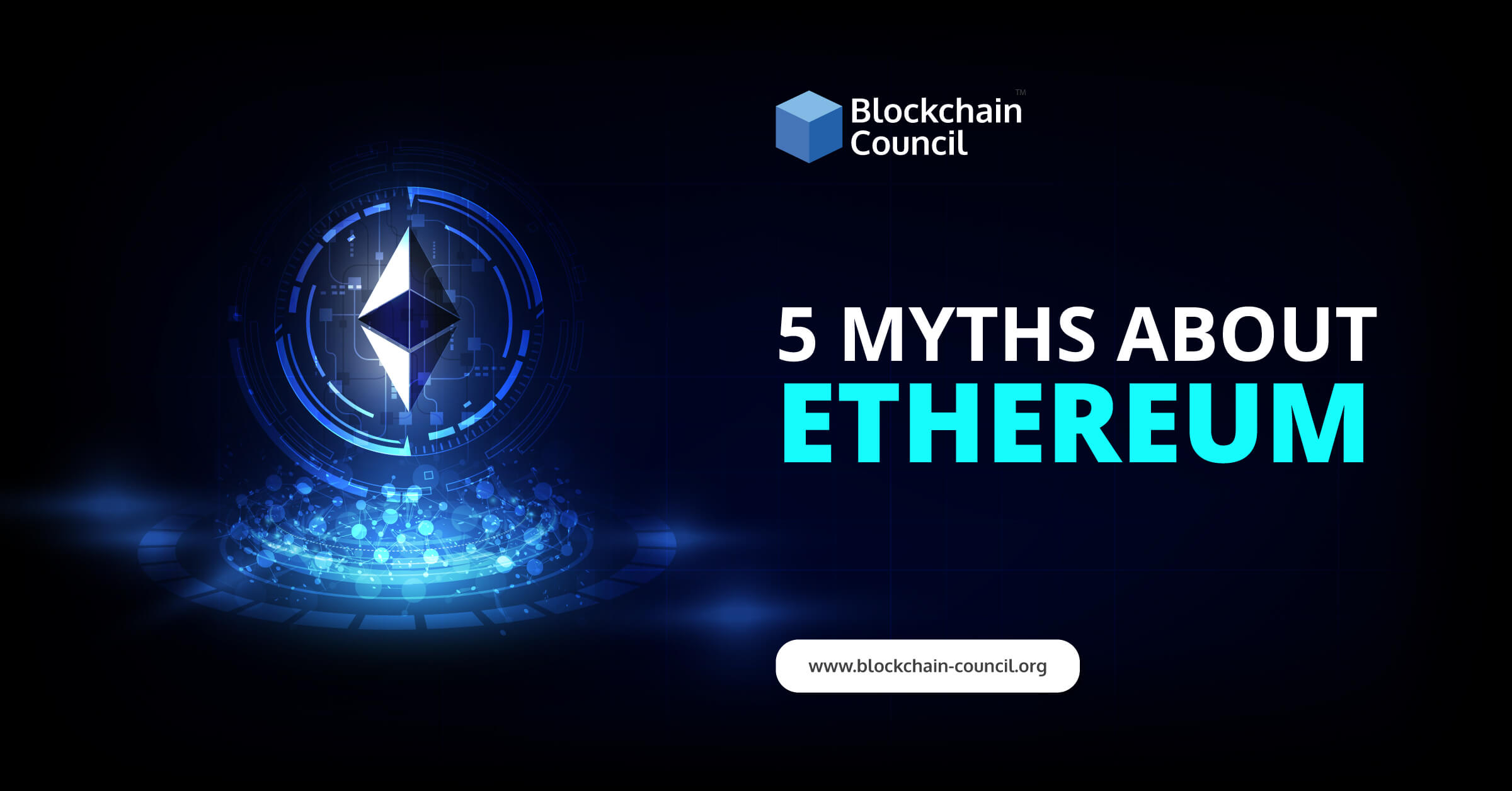
- Toshendra Kumar Sharma
- January 15, 2020
Right from its birth, umpteen number of myths have been woven around the Ethereum platform. Decentralized operations that are made possible through blockchain technology, which is the reason behind the very existence of such cryptocurrencies, have acquired immense value for banks and other financial institutions, thus providing new concepts of financial transparency and security, that have represented a positive change to the way in which business is conducted.
A study conducted in February 2018 revealed that Ethereum is more distributed than a majority of other nodes across the globe, and this proves that the Ethereum network is more decentralized than Bitcoin. But in spite of this, there are many myths that Ethereum is associated with. This article will touch upon those common myths. Before moving on to the myths, let us get a fair idea of what Ethereum is.
Understanding Ethereum
Ethereum is an open-source, distributed computing platform that features smart contract functionality. It is a decentralized, global platform for money and many other applications. The Ethereum platform allows us to write codes to control money and build applications that are accessible from anywhere in the world. It is a public blockchain that allows application developers to pay using Ether (Ethereum’s cryptocurrency) for services availed on the Ethereum blockchain.
Myths Surrounding Ethereum
1. Ethereum does not have errors or failures
There is a common myth that we often hear about Ethreum being a cryptocurrency that is 100% free from failures or errors. But that is actually not the case. Ethereum, like any other cryptocurrency, is not necessarily infallible. But the fact is that, right from when it was created, it has tried to shield itself from the different attacks that may exist. Its strong foundation in smart contracts (self-executing contracts) makes sure that each and every user shoulders the responsibility of protecting the transactions they make. This is also one of the sole reasons why people would never want Ethereum to fail.
2. Ethereum Has Protection Against Attacks
The three vital elements that form the basis of this characteristic are resistance to attack, fault tolerance, and resistance to collusion. The crucial point to note is that even if one of these fails, the system could become a decentralized entity. This will make it difficult for the participants in the decentralized systems collude to act in such a way that they benefit from them at the expense of other users. Governments and corporations collude to benefit themselves, which will, in turn, be harmful to other customers.
3. The Collusion of the Pools is Impossible
Pool operators will only be able to include transactions that are interested in processing in the blocks that have been generated. One of the major objectives of modern mining that many pools have is to provide the distributed generation of the blocks. At present, about 60% to 70% of the total network hashrate only belongs to four or five of the most popular tools. This can be applied to any cryptocurrency whose complexity has exceeded certain limits. This makes mining alone difficult.
4. Wallet Owners Can Have Private Access to Funds
One of the most common characteristics of cryptocurrencies is that no one can make or be a part of any transaction with funds that do not belong to him. In a token system, this is guaranteed through the following scheme: each agent must have the capability to allow the transaction to happen and then comply with the needs or requirements of the previous agent, which refers to having the correct private key and avoiding double transactions or theft.
5. It is impossible to Manipulate the Ethereum Network Configuration
In 2017, CryptoKitties, the blockchain game developed on Ethereum that allows one to buy, collect, breed, and sell virtual cats, accounted for more than 13% of Ethereum traffic. For this reason, it came to be called Ethereum’s Killer App. We must never underestimate the threat of applications. Developers are in control of both the smart contracts and the game. In such applications, expenses increase in price gradually, and it is possible for each contract to be suspended at any time. This is indeed a security measure for developers in case of any piracy that may exist in the accounts owned by the team. One possibility here is that the owner of the key of the main account has the right to freeze the entire game and all accounts at any time. Coming to the myth that it is impossible to manipulate the Ethereum network configuration, it is possible for developers to modify the smart contract and have a closed code.
Conclusion
I hope you found this article useful and would have, by now, gained a fair idea about the five common Myths of Ethereum. To get instant updates about Ethereum certifications, and to become an Ethereum expert, check out Blockchain Council.





































































 Guides
Guides News
News Blockchain
Blockchain Cryptocurrency
& Digital Assets
Cryptocurrency
& Digital Assets Web3
Web3 Metaverse & NFTs
Metaverse & NFTs
